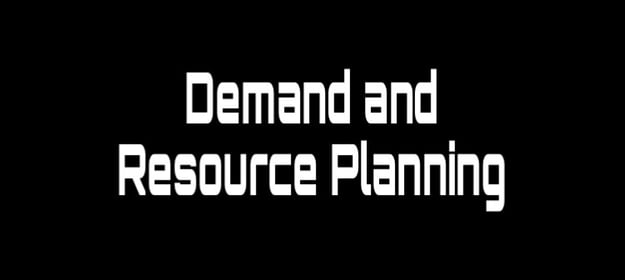Topics: Advanced Planning and Scheduling, manufacturing, PlanetTogether, resource, enterprise resource planning, Demand Forecasting, Demand planning, ERP System, manufacturing technology, Agile manufacturing
Many production facilities struggle with getting the right balance of demand and resource planning. While these are both critical aspects of controlling costs, they often seem to be in direct competition with each other.  When supplies are cheap, orders are down, and when costs for supplies are high, orders are up. If this seems like a scenario that you face often, try these three tips to balancing your demand and resource planning.
When supplies are cheap, orders are down, and when costs for supplies are high, orders are up. If this seems like a scenario that you face often, try these three tips to balancing your demand and resource planning.
If you’re running your manufacturing schedule solely on what orders need to go out this week, then you’re probably not doing much in the way of resource or demand planning. If you have accurate predictions of what is going to be ordered over the next several months, you’ll be in a much better position to shop for materials and plan your production schedule around what will be needed in the future. When materials are cheap for the items that you know you’re going to need to make, you can purchase them. When there are gaps in the production schedule, fill them by making product for future orders.
Of course, in order for this to work it’s necessary to have very accurate prediction software. A predictive analytics program can review thousands of past buy and purchase orders in order to determine the optimal times to buy materials and create new product.
Generally speaking, it’s a good idea to buy materials at the lowest price possible and sell product at the highest price possible. Sometimes, though, a low price is an indication of a huge problem. New suppliers offering rates well below the market price for their product might not just be looking to move material, but rather might be trying to dump substandard product on your company. Likewise, a sudden change in a long time client’s buying pattern could signal a change in the market that you need to be aware.
Don’t buy and sell products blindly. If a price seems suspiciously low or an offer is too good, find out why.
Every manager knows that there’s nothing worse than having to account for product sitting in factory storage. While it may seem like a good idea to keep factory lines running at all times, building up stock without a buyer will run through capital. Rather than running production lines to keep workers busy, use an advanced scheduling program to determine what products are going to be in demand in the next few months.  These programs can do a lot more than tell you to run your standing orders a few weeks early. Today, they’re capable of analyzing past orders to determine what products are going to be ordered in the future. It can also analyze your production schedule so that maintenance is scheduled during lulls in orders and production. That means you’ll be able to limit the stock you have on the floor.
These programs can do a lot more than tell you to run your standing orders a few weeks early. Today, they’re capable of analyzing past orders to determine what products are going to be ordered in the future. It can also analyze your production schedule so that maintenance is scheduled during lulls in orders and production. That means you’ll be able to limit the stock you have on the floor.
Topics: Advanced Planning and Scheduling, manufacturing, PlanetTogether, resource, enterprise resource planning, Demand Forecasting, Demand planning, ERP System, manufacturing technology, Agile manufacturing
0 Comments
No video selected
Select a video type in the sidebar.







LEAVE A COMMENT